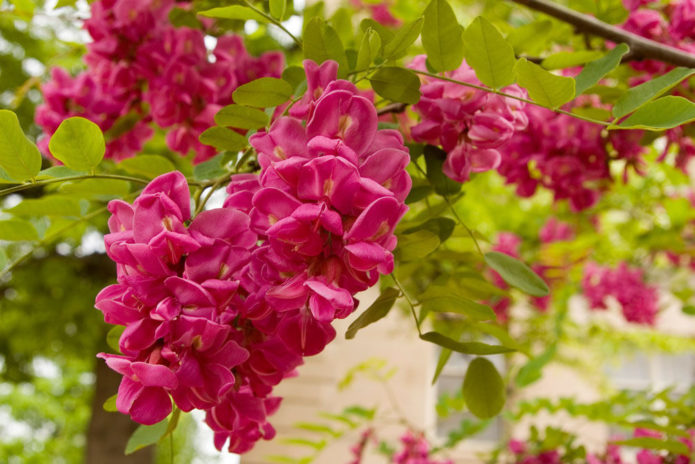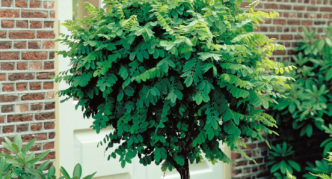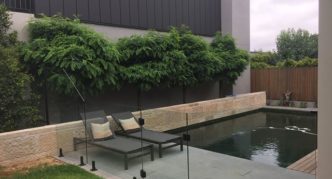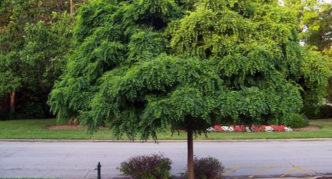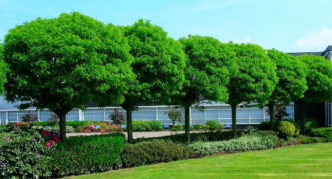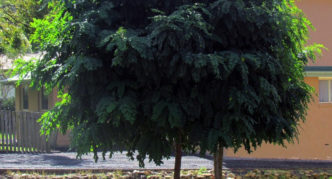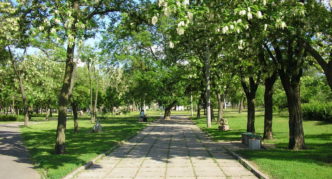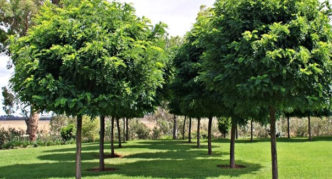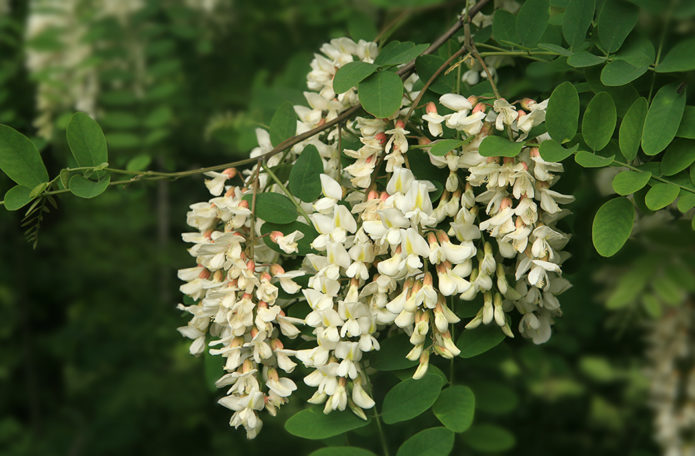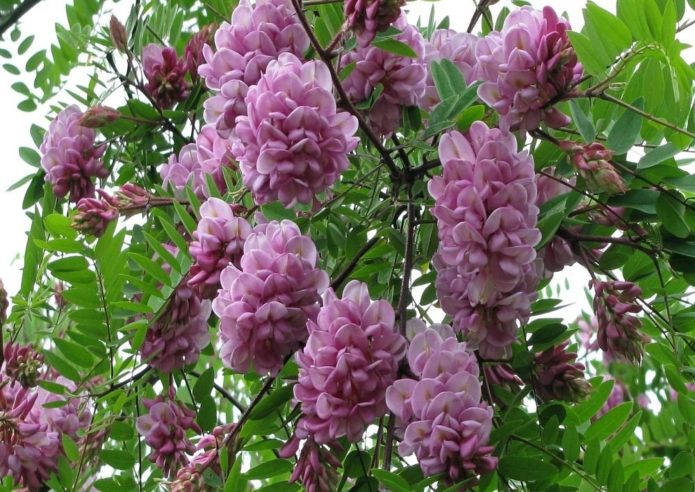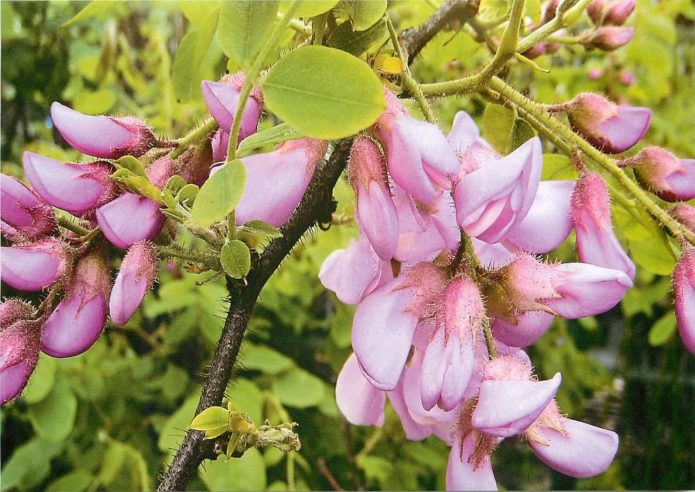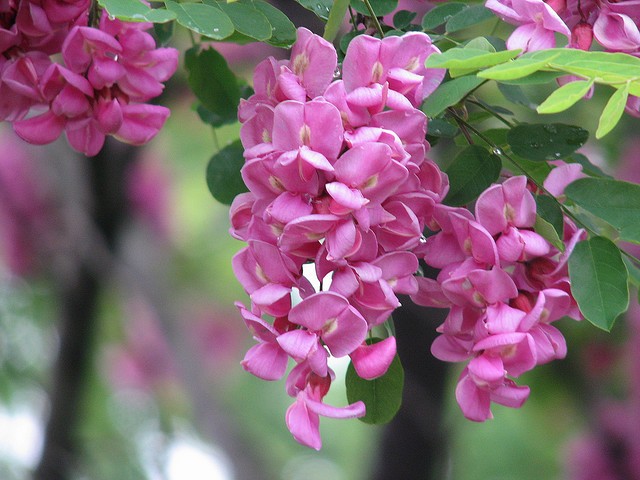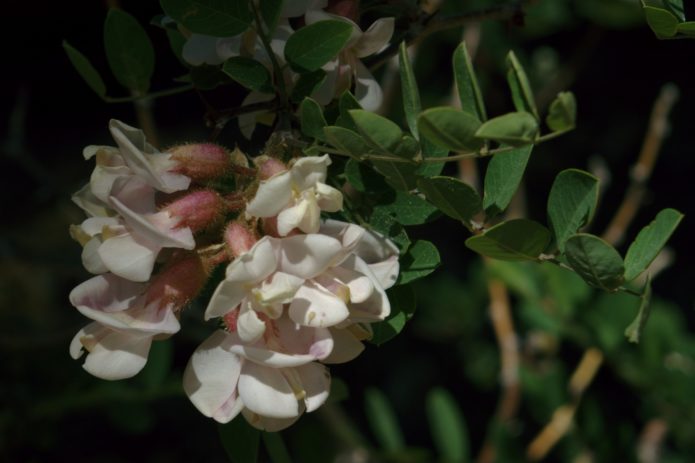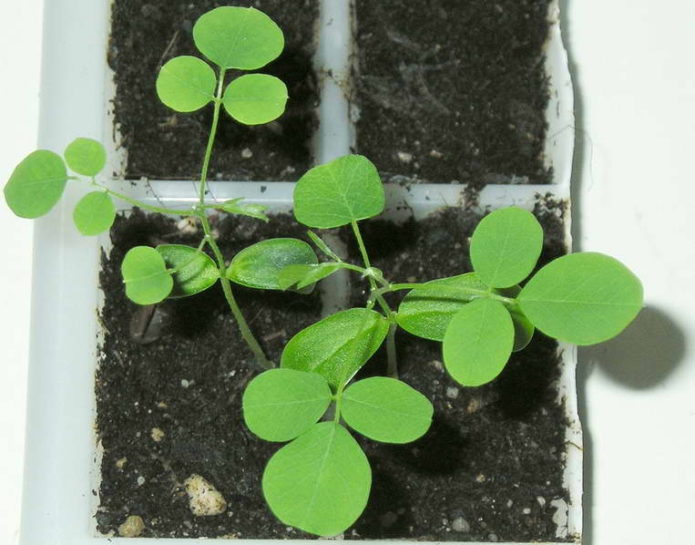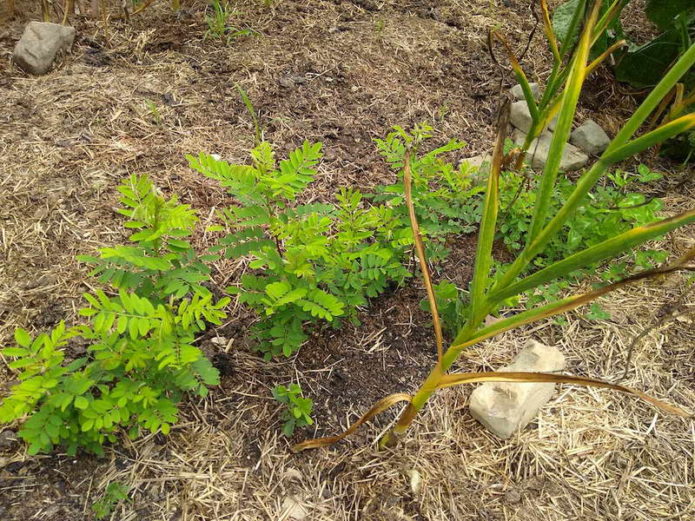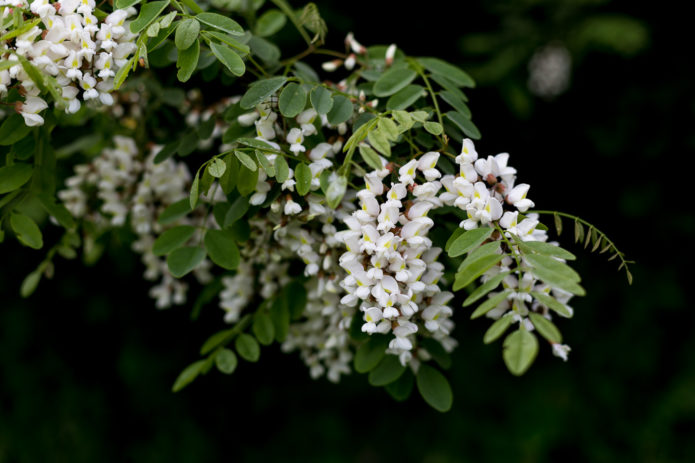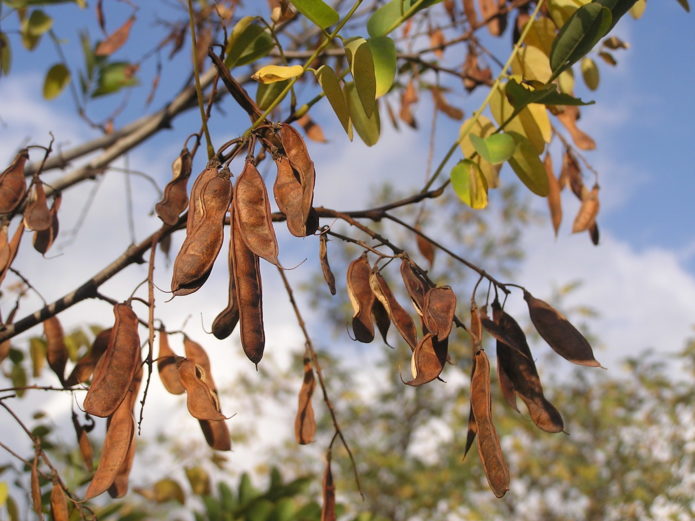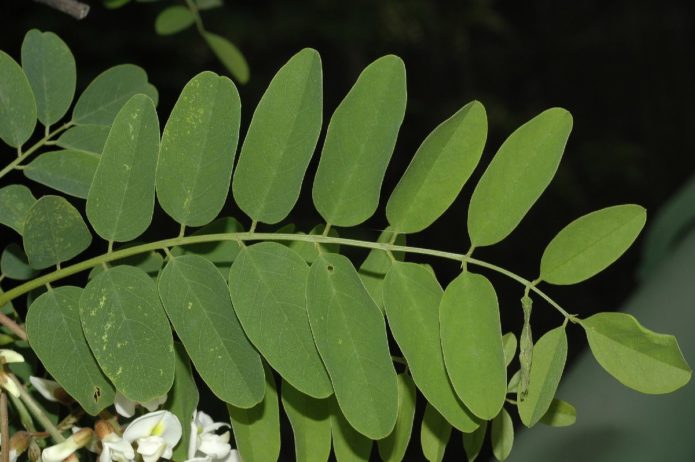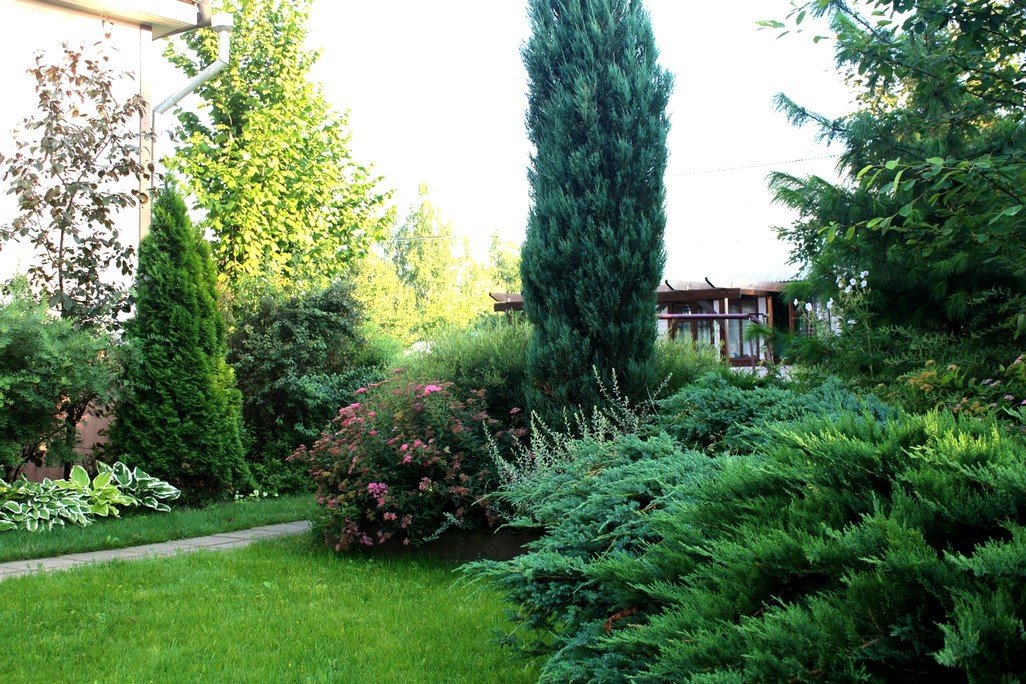A perennial robinia shrub (or pseudoacacia) is a frost-resistant, fast-growing plant that does not require special attention. Its main decoration is a lush flower cap that exudes a delicate, sweetish aroma, blooming on the crown in late May - early June.
Content
Robinia as a perennial garden culture
Robinia is a deciduous perennial legume native to the wild in North and Central America. As a garden culture, the plant was brought to Europe in 1601 by the French gardener J. Robin. He collected pseudoacacia seeds in Virginia during a trip to America.
Later, the botanist K. Linnaeus gave the species the name "Robinia" in honor of the father and son Robins, who discovered this highly decorative shrub for European gardeners.
The plant is a sprawling tree-like shrub up to 4 meters high or a tree growing up to 18 meters, with an openwork, spherical crown. Robinia grows very quickly: already at the age of three, its height is 4–5 meters. In late spring, the crown is decorated with fragrant, drooping inflorescences 15–25 centimeters long. The flowers of some species, similar to pink or white moths, have a strong, sweet scent that attracts bees. Flowering lasts 2-3 weeks, after which pods with seeds appear in place of falling buds, which ripen by October.
Role in landscape design
Robinia is used to decorate parks, streets, alleys and suburban areas. The shrub looks great in single and group plantings. This is a great option for creating a shady corner in the garden.
Shrub species are used for hedges. For these purposes, the plants are planted in a checkerboard pattern at a distance of 30–40 cm from each other.
Robinia's powerful roots strengthen the soil well on slopes, slopes, hills. Beekeepers use trees as honey plants, so they plant them next to apiaries.
Photo gallery: robinia in landscape design
How best to grow
Robinia treelike forms a powerful, branched root system, reaching 10-12 meters in depth. It is grown exclusively in open ground, in well-lit areas. The crown of the robinia is spreading, therefore, when planting, it must be provided with space. Some shrub species can be grown in spacious tubs outside, in a veranda or in a winter garden.
The plant is not demanding on the climate, it can tolerate heat, drought and temperature drops to –40–45 ° С. Robinia is successfully grown by gardeners from central Siberia, the Urals and southern regions.
Popular varieties
In nature, there are about 20 species of robinia. The following varieties are most popular in cultural gardening:
- Robinia is sticky.A tree from 8 to 12 meters high with a spreading, spherical crown. This species received its name due to the presence of a thick sticky coating at the bases of the petioles. Inflorescences of the species are racemose, up to 20 centimeters long, pink or pink-purple hue.
- Robinia is bristly haired. Shrub no more than 3 meters high, unstable to severe frosts. Flowers of light pink or deep purple hue at the base are covered with red hairs.
- Robinia is fruitful. A subspecies of bristly haired. Withstands frosts up to 27-28 ° С, forms thickets of bushes up to 1.2 meters in height.
- Robinia New Mexico. A tree with a height of 2.5 to 4.5 meters. The branches are covered with long thorns. The flowers of the species are white, with a pinkish tinge at the base of the petals.
Planting methods
Robinia can be grown from seed or propagated vegetatively. For generative reproduction, the seeds are pretreated: dipped in boiling water for 2-3 seconds, then placed in ice water. This technique helps to destroy the hard shell, through which it is difficult for the germ to break through. Scarification can also be done with a file.
After processing, the seeds are placed in loose soil to a depth of 0.5-1 cm. Greenhouse conditions are created for crops, covered with film or glass. Germination is carried out in a bright place at a temperature of 20–23 ° C. The first shoots appear in 15–20 days. In order to get a fully developed seedling by the time of planting in open ground, by about the end of May, sowing is carried out in early February.
The seed method of reproduction of Robinia is long and laborious. You can get a young seedling that will quickly take root in the open field and begin to develop actively using vegetative methods:
- Basal processes. Robinia actively forms young shoots around the main bush. In the spring, one of these processes is separated from the mother plant and planted in a separate place.
- Layers. The lateral shoot is bent to the ground. Fix with a wooden or metal slingshot and sprinkle with soil. During the growing season, a root system is formed on the cut. The shoot is separated from the mother plant the next spring.
- Cuttings. The apical shoot is cut from the bush, divided into pieces of 15–20 centimeters and placed in a mixture of peat and sand. When rooting in early spring in the fall, the rooted cutting can be planted in the ground.
Young plants are planted in the ground in spring, after the onset of heat. Autumn planting is possible only in regions with warm winters.
When transplanting robinia from a pot into the soil, the root collar is left at the same level.
Care in the garden from the moment of planting in the open ground until autumn
Robinia care consists of watering, fertilizing, loosening and sanitary pruning. Attention should mainly be paid to young specimens under the age of 3 years.
How to care during growth and flowering
Young robinia seedlings are watered regularly and abundantly: 10-15 liters of water once a week. The trunk circle is freed from weeds. Loosen and mulch with chopped straw or dry leaves. A plant aged 4 years and older does not need additional watering. Since its roots are able to independently extract moisture from the soil.
Organic fertilizers are applied as top dressing for the bushes: humus, compost.If enough organic matter was introduced into the pit during planting, additional fertilizing begins from the third year of the plant's life. Fertilizers are applied to the soil in early spring and after the flowering of acacia.
Robinia requires shaping and sanitary pruning. The procedure is carried out in early spring. Remove dried, damaged shoots knocking out of the crown.
It is especially necessary to cut out the growth that forms around the bush. If this is not done, the plant will quickly lose its decorative effect, and the site will be covered with thickets, which will be very difficult to cope with in 1-2 years.
Post-bloom care and preparation for winter
To restore the strength of the plant after flowering, the soil is watered with a solution of mullein or bird droppings. To obtain fertilizer, a third of a bucket of raw materials is poured with water and infused for 6–7 days, stirring occasionally. Before use, the infusion is diluted with water in a ratio of 1:10. For one bush, 5-10 liters (depending on the age and size of the plant) of top dressing are spent.
Robinia tolerates even severe frosts well. But young bushes under the age of 3 years need to be covered for the winter. The trunk of the plant is wrapped with non-woven material, the soil is covered with a layer of straw or dry foliage.
Diseases and problems of growing
Despite its unpretentiousness, in adverse conditions, robinia can suffer from diseases and lack of nutrients. Problems arising during its cultivation are identified by the state of the leaves and bark of the plant:
- Yellowness and drying of the leaves - chlorosis, which develops due to a lack of iron in the soil. The problem is eliminated by introducing ferrous sulfate into the soil.
- Sluggish branches and stunted growth - decay of the root system during waterlogging or planting in an area with a close location of groundwater. The way out of the situation is to transplant a plant and comply with watering norms.
- Cracking, darkening of the bark or a whitish coating on the trunk is a fungal attack. The plant is treated with an antifungal drug.
The healing properties of robinia and recipes for folk remedies
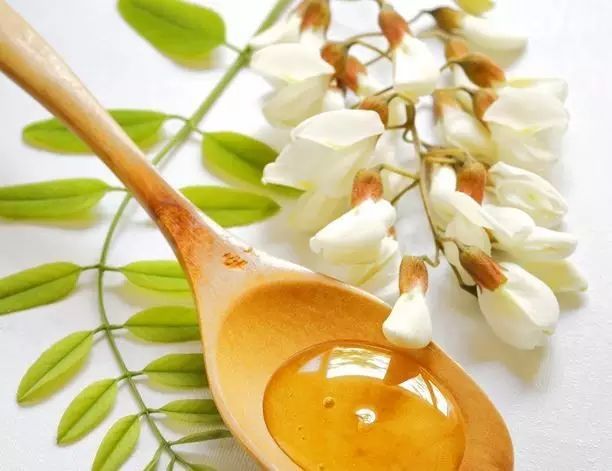
Robinia is an excellent honey plant: the honey is transparent, light in color, has a delicate aroma and does not sugarcoat for a long time
All parts of Robinia have healing properties, are saturated with vitamins, minerals, essential oils. Preparations based on this plant have an antispasmodic, diuretic and disinfectant effect on the human body.
Used to treat:
- diseases of the genitourinary system;
- viral and bacterial infections;
- respiratory tract diseases;
- disorders of the digestive tract.
Decoctions and tinctures are prepared from the leaves, flowers and bark of robinia:
- Decoction of flowers. 2 tbsp. l. flowers are poured into 1 liter of boiling water and heated in a water bath for 3 minutes. After cooling, filter, take 3 times a day for 2 tbsp. l. 30 minutes before meals as a diuretic for pyelonephritis, cystitis or antiseptic for gastrointestinal diseases. The course of treatment is 21 days.
- Tincture of bark and fruit. Remedy for post-stroke recovery. 50 g of raw materials (crushed bark and fruits equally) are poured with 50 g of vodka and insisted in a dark place for 21 days. The agent is taken orally 10 drops 2 times a day for a month and rubbing the spine and limbs with it at night.
- Tincture of unblown buds. Prescription for the treatment of gynecological inflammatory diseases. 200 g of fresh buds are poured with 500 ml of vodka and infused for 14 days. Take 1 tbsp. l. 20-30 minutes before meals 3 times a day.
Robinia is a highly decorative and at the same time useful plant for human health. Many gardeners have already appreciated this shrub and settled it in their suburban areas.
